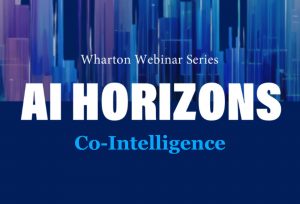
Image credit: Advertising week.
Leading brands across industries are leveraging AI to fill in the gaps of their consumer understanding and build more effective and efficient campaigns. AI is accelerating marketing transformation and enabling brands to understand the whole human of today and predict what they will want tomorrow for faster action, stronger 1:1 relationships and higher performance across the organization.
This is the promise of AI, and marketers today are being inundated with messaging urging them to tap into its full potential. But what does that really look like? What can marketers really hope to learn about their customers in today’s privacy-first landscape?
In short: More than you think. Here’s what you should look for when enriching your first-party data to create a better understanding of your customers at the individual level.
Filling the Gaps in First-Party Data
How well do you really know your customers? Most business leaders might be surprised. While 84 percent of global decision makers from enterprise-level companies say they put the customer first, only about 1 in 4 U.S. online adults agree that companies do a good job of understanding them as a person. This disconnect is a problem in a world where customers have expectations for highly personalized experiences—and they’re legitimately disappointed when brands don’t deliver them.
Today, this gap between surface-level customer knowledge and the deep insights required to establish true relationships can be bridged by technology—specifically AI. In fact, modern-day AI offerings span the entire customer lifecycle, as evidenced by the following capabilities:
Acquisition:
Segmentation and micro-segmentation
Persona development
In-market and intent insights
Personalization
Competitive displacement
Media planning
Look-alike modeling
Growth:
Upsell and cross sell
Next-best-action decisioning
Profiling journey touch points
Retention:
Churn prediction
Retention campaigns
Loyalty layers
To deliver on the above capabilities, brands need to start with first-party data—but even among the most data-rich brands today, first-party data isn’t enough. Your brand likely has access to transactional and engagement data based on its relationship with the customer, but that data is largely limited to their interactions with you and, realistically, their universe does not center on your brand. And even if you are currently leveraging traditional data or syndicated research providers to enrich this first-party data, it is woefully inadequate.
That’s where AI comes in, enabling marketers to deepen their existing data with richer psychographic, preference, intent, in-market, behavioral and media consumption patterns than ever before possible. This is where the kind of startling and powerful insights into consumers—the ones that can drive truly precise and personal messaging and offers—originate. Leveraging AI-powered data empowers marketers to more effectively target and engage consumers, improving all stages of the customer lifecycle.
AI-Enriched Insights in Action
Another area where leveraging AI-powered data can supercharge marketing performance is segmentation. The key is to open your mind to the concept of a new starting point. Rather than conventionally starting with a demographic-based value or the similarities or differences you think you understand about certain populations—Republicans vs. Democrats, or Boomers vs. Gen Z—it’s far more powerful to leverage AI to analyze the entirety of your audience population and auto-cluster based on any attribute.
Take football fans, for example. For many brands, having access to a segment of known American football lovers provides the foundation for a number of marketing initiatives. But what if you use AI to go deeper? Within the Resonate Ignite platform, we recently leveraged our rAI (our AI engine) to compare everyday football fans to NFL super fans—and the similarities and differences we uncovered suggested that brands looking to connect with this group of enthusiasts would do well to understand just how deep a person’s passion for the sport goes. For example:
67 percent of football fans are not fans of their local teams. NFL super fans, however, are much more likely to be fans of their local team.
Any level of football fan is more likely than the online adult population to attend in-person sporting events, and nearly 90 percent plan to tune into the Super Bowl no matter who is playing.
Smart TVs are the most common devices that both groups use to watch professional sports. However, NFL super fans are far more likely to also be watching on their smartphones.
Fan Duel is the fan favorite for online sports betting for all football fans, but this preference is more pronounced for super fans, as is their preference for DraftKings as a fantasy sports platform.
Think of first-party data as a black-and-white photo of your consumers. With AI, that photo comes into crisper focus, and in vibrant color.
Ultimately, AI-powered insights are about driving performance for brands, and there’s never been a better time to take advantage of these capabilities. AI allows you to enrich your first-party data with the most recent and predictive data to complete your consumer understanding at the individual level. With fresh, relevant information on consumer sentiment, preferences and behavior, you can create one-size-fits-one messaging to enhance and grow loyalty and revenue—at every step of the customer lifecycle.
What’s your thought about this?
Kindly like and share.



















